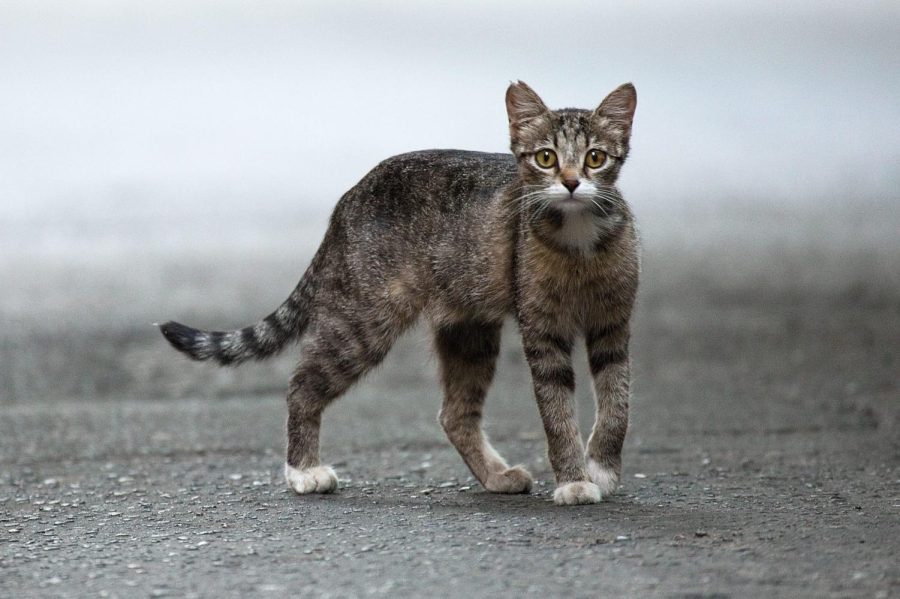What is the Difference Between Stray and Feral Cats?
Feral, stray, and pet cats are all of the same family, they are all domestic cats. However, there is a stark difference between feral and stray cats in their relationship and interactions with people. So for those looking for a new feline friend, this article will help you differentiate the differences between stray and feral cats and inform you on what to look out for when looking for a new furry friend. We will also discuss the differences in body language in the kinds of cats, socialization to humans and cats, physical appearance, and responsiveness. Note: Keep in mind that every cat is different and the behaviors mentioned are not always the same for a specific kind of cat.
What is Socialization?
When a cat is socialized, it means she is used to people and enjoys companionship with people. Taming or socializing a cat can be done by acclimating her to human touch, human smell, and sounds. These things will influence a cat’s life and will take time and effort. It is important for kittens to become accustomed to people within the time frame. If not, it can grow up apprehensive of humans and will most likely not be happy living in homes.
What is the difference between Stray and Feral Cats?
Pet and Stray Cats are socialized to people. Feral cats aren’t, and while they are related to their socialized family members, they do not have the same relationship with people.
More Information on Stray Cats:
A stray cat is a cat who lived indoors and was socialized to people at some point in her life but has left, lost her home, was abandoned or had no more regular human contact. Fun Fact: Over time a stray cat can become feral as her contact with humans decreases. Under the right circumstances, a stray cat can become a pet again, even though it may take time for it to get used to being indoors after living outdoors.
More Information on Feral Cats:
A feral cat is an unsocialized outdoor cat who has either never had any physical contact with humans, or human contact has diminished over enough time that she is no longer used to it. Most feral cats are fearful of people and are not likely to ever enjoy living indoors and being a lap cat. Kittens that are born to feral cats can be tamed at an early age and adopted into indoor homes. It is usually not recommended to try to tame a feral kitten over 4 months of age. Socializing time is consuming, especially for older kittens, and results are not guaranteed.
Why is it important?
Knowing these differences helps you to determine the best way to care, help, and protect these cats. Stray and feral cats can be quite difficult to tell apart, especially when they are trapped or frightened. Scared stray cats need time to relax and get used to their new environment to show off their level of socialization. Note: Since feral cats are not socialized to people, they can’t be adopted into indoor homes. Therefore, they are likely to be killed if picked up by animal control or brought to shelters. Feral cats present a problem in which they are a threat to wildlife.
Note: Trap-Neuter-Return is a program where cats who are humanely trapped, scanned for microchips, sprayed or neutered, vaccinated, ear-tipped, and microchipped. Stray cats who are thriving and don’t have microchips show that they are lost and can be returned to their outdoor home or fostered and adopted.
Sociable Behaviour to Humans:
A stray cat may approach people, houses, porches, or cars and they will likely live alone. On the other hand, feral cats will not approach and will likely seek hiding places to avoid people. They may belong to a colony.
Body Language:
Stray cats might walk and move like a house cat(walking with tail up-sign of friendliness.) They will probably look at you, blink, or make eye contact. A feral cat may crawl, crouch on the ground, and protect its body with its tail.
Vocalization:
Stray cats may be vocal, meow, or answer your voice while feral cats won’t meow, beg or purr.
Note: Stray cats will likely be seen during the day while feral cats are more likely to be nocturnal, occasionally during the day.
Physical Appearance:
A stray cat will probably be dirty or disheveled, and will not have an ear tip. Feral cats will probably have a clean, well-kept coat. A male with a big head, thick neck, muscular shape, scars from fighting, is more likely to be feral. Fact: 2% of feral cats are neutered in the U.S. He may have a spiky coat from high testosterone levels and less time spent grooming; may have hair loss, greasiness, or bumps at the base of the tail due to hormones, and will likely have an ear tip if neutered as part of a TNR program.
Note: Many experts agree that feral adult cats simply cannot be tamed because they are wild animals, like raccoons. Just like you would never try to handle a raccoon, you should never try to pick up a feral cat.
Closing Comments: I hoped you found the points discussed interesting and useful and please check out the resource link used to get information for this article. It goes into the differences of behavior between stray and feral cats when they are trapped(by either shelter or animal control).
Sources Used In Research:
https://www.alleycat.org/resources/feral-and-stray-cats-an-important-difference/







